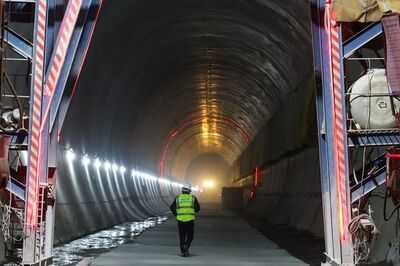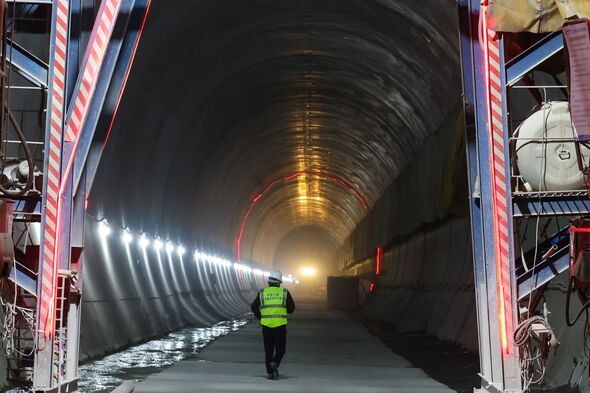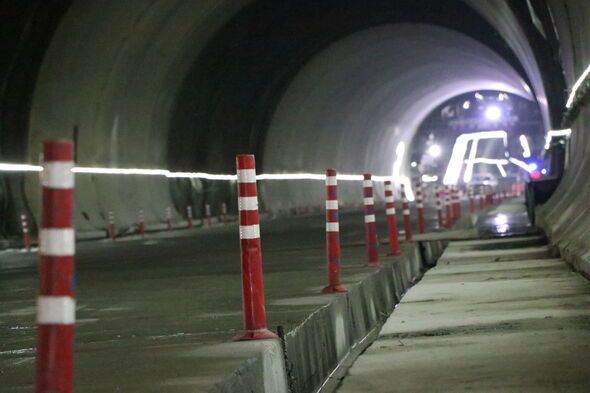

is building a stunning 602-metre tunnel linking the Asian powerhouse to Europe.
The Suifenhe tunnel, just above North Korea, will replace three 120-year-old railway tunnels on the Russia-China border.
The structure is scheduled for completion in May 2025.
It is set to boost trade between China and Europe, increasing the number of journeys from the continent to the port of Suifenhe in China's north-east Heilongjiang Province.
The port along the eastern corridor currently handles about 900 freight train trips with 88,000 twenty-foot equivalent units each year.
The China-Europe freight rail service was launched in 2011, connecting cities as far as Chongqing to Duisburg in Germany.
This also expanded routes linking other Chinese cities, such as Chengdu and Wuhan, to European destinations, such as Madrid and Warsaw.
China is also building a massive bridge-tunnel connecting two major cities across a staggering 30.8 miles (49.7km) in the greater bay area of Guangdong, which is home to roughly 86million people.
Costing £3.8billion, it will connect the city of Shenzhen on the eastern side of the Pearl River Delta and the city of Zhongshan on the western side.

The bridge will significantly reduce travel times in China between the cities of Zhongshan and Shenzhen.
The 13.7-mile Tianshan Shengli tunnel also slashed travel times on the 300-mile journey from Urumqi to Korla, a major city in southern Xinjiang, to less than two hours.
With improved connectivity, the tunnel will boost regional economic growth and social development.
Xu Tianchen, an expert from The Economist Intelligence Unit, explained the strategic importance of the tunnel.
He told The Sun the tunnel could be game-changing infrastructure for Central Asia that sparks increased economic activity.
The expert said: "Completion will certainly benefit trade and economic growth in the underdeveloped part of Xinjiang.
"Central Asia provides a reasonable return-risk mix, especially with its rich energy reserves and acceptable security situation."